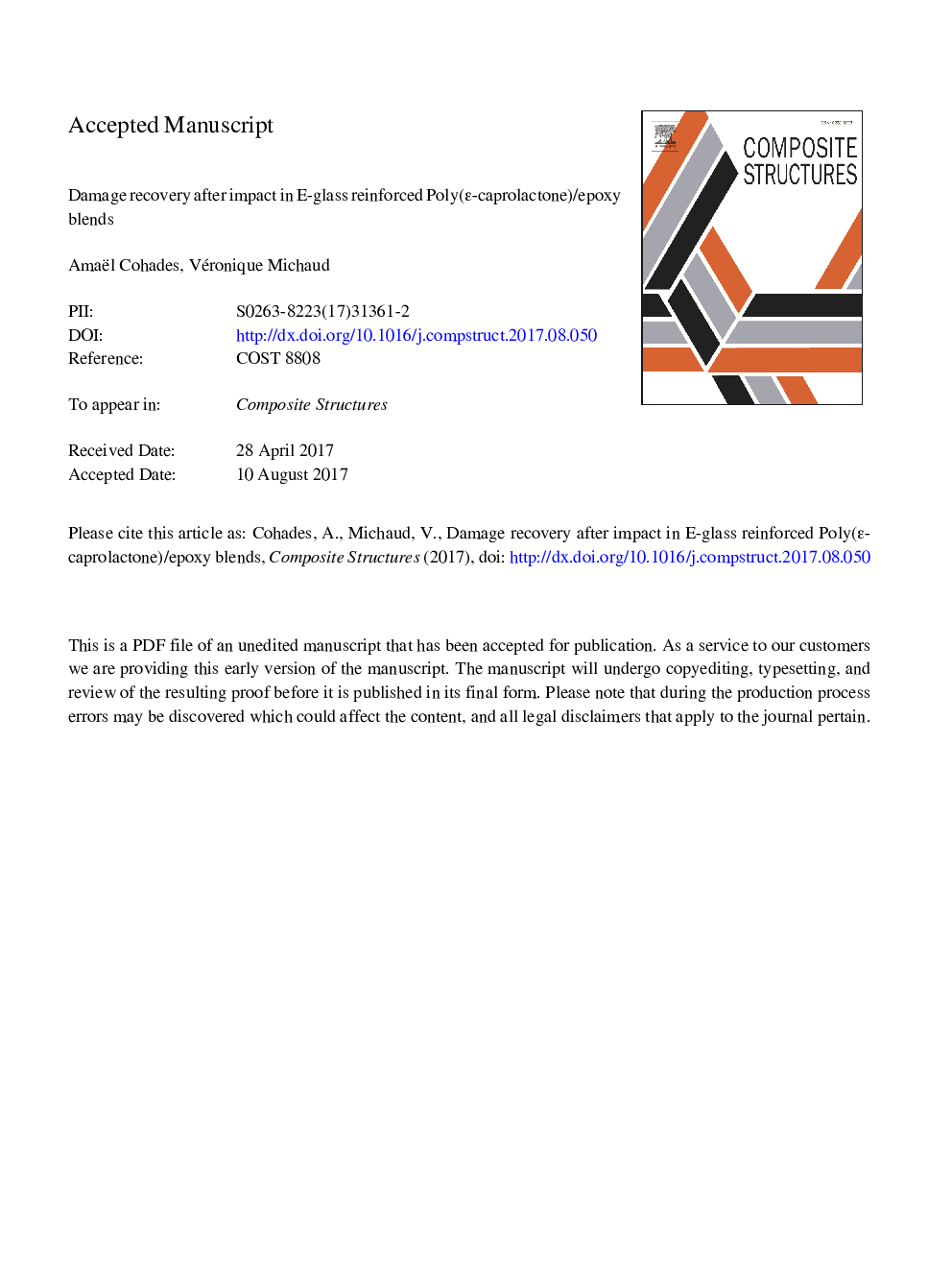| Article ID | Journal | Published Year | Pages | File Type |
|---|---|---|---|---|
| 4917654 | Composite Structures | 2017 | 20 Pages |
Abstract
Damage recovery after low-velocity impact has been assessed in woven E-glass fibre-reinforced polymer composites with an epoxy matrix and a blend of epoxy and 25 vol% of poly(ε-caprolactone) (PCL). Impact was carried out at three energy levels (8.5, 17, 34 J) and composites with epoxy-PCL blends demonstrated similar energy absorption capacity as compared to pure epoxy composites even though the extent of damage (quantified by C-scans and optical microscopy) was higher. Ultimate compressive residual strength of the modified composites was, for the different impact energy levels, 23-33% lower as compared to unmodified composites. Healing efficiency after a thermal mending cycle at 150 °C for 30 min has been quantified using three complementary characterization methods; impact damage could be recovered from 20% to 100% depending on the impact energy level. These modified matrix composites are thus able to fully recover low-velocity impact damage at energy levels often met in real structures.
Related Topics
Physical Sciences and Engineering
Engineering
Civil and Structural Engineering
Authors
Amaël Cohades, Véronique Michaud,
